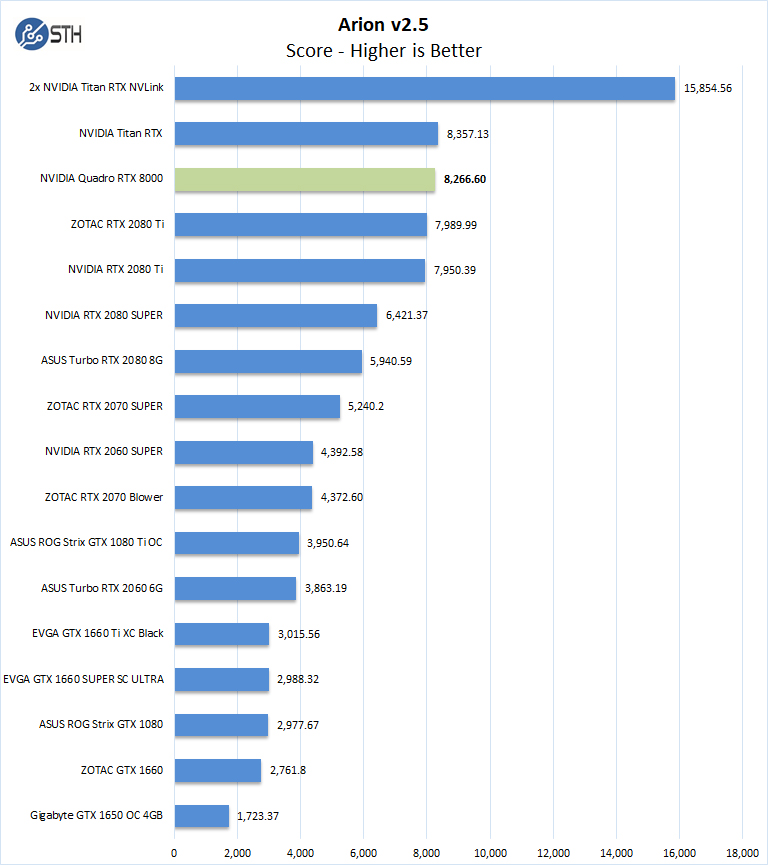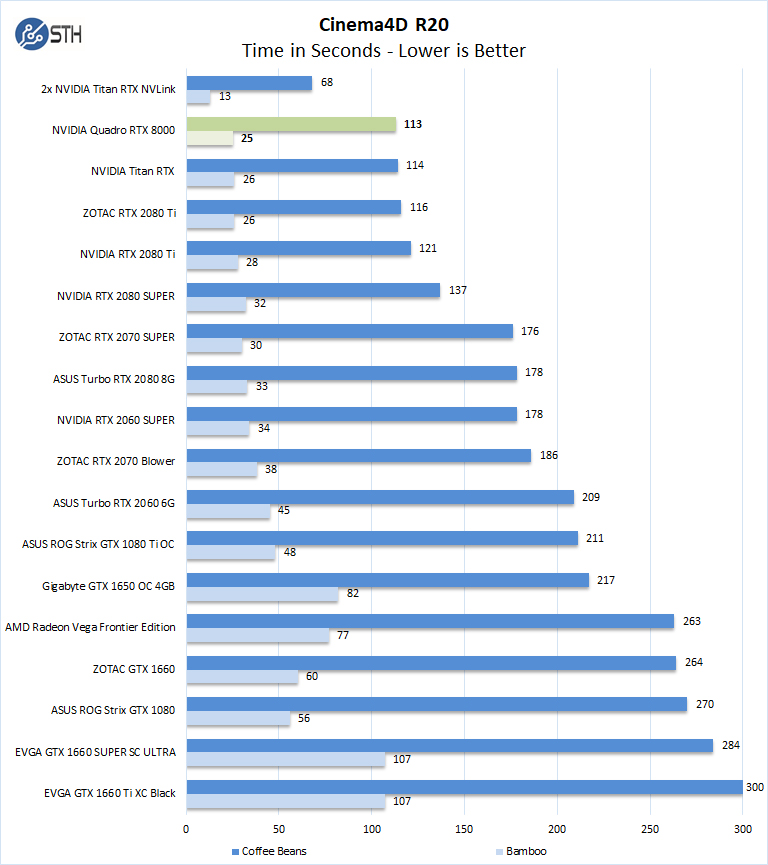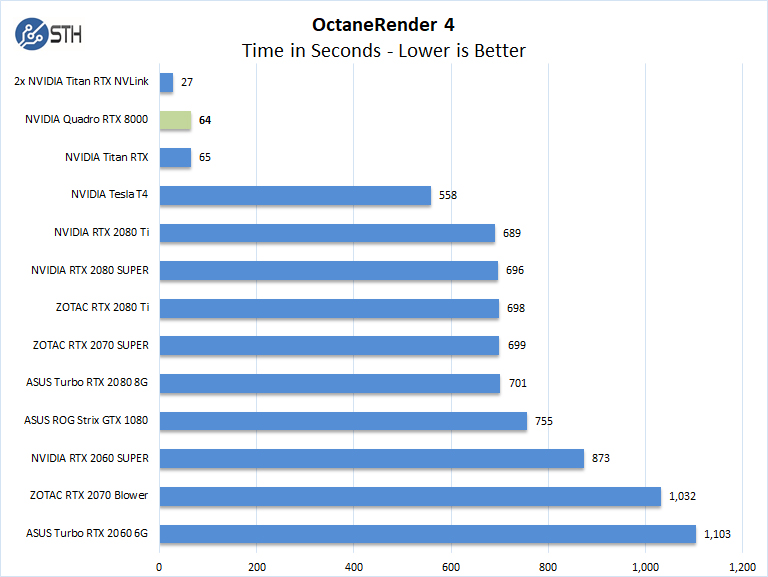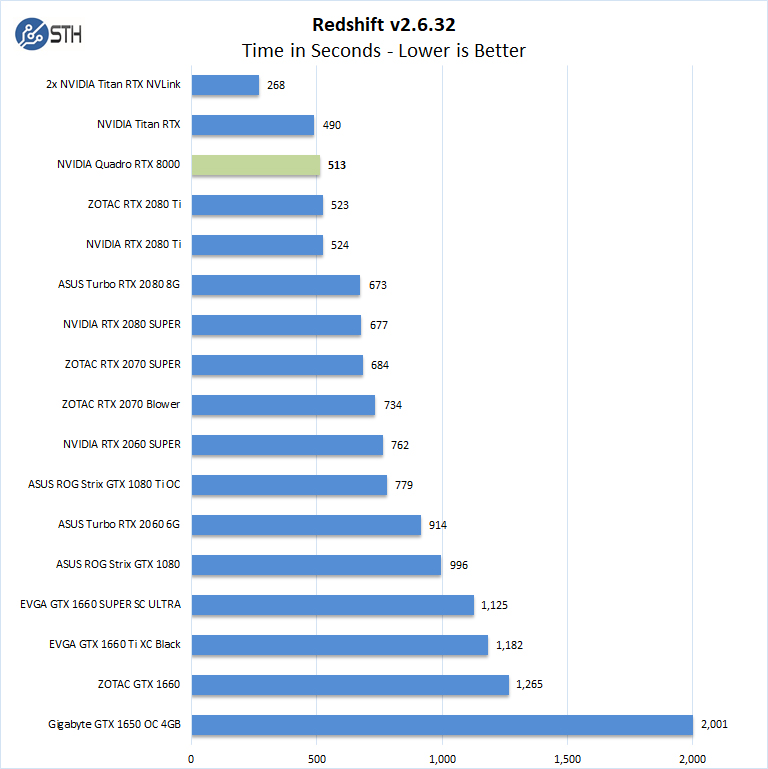NVIDIA Quadro RTX 8000 Rendering Related Benchmarks
Next, we wanted to get a sense of the rendering performance of the NVIDIA Quadro RTX 8000.
Arion v2.5
Arion Benchmark is a standalone render benchmark based on the commercially available Arion render software from RandomControl. The benchmark is GPU-accelerated using NVIDIA CUDA. However, it is unique in that it can run on both NVIDIA GPUs and CPUs.
Download the Arion Benchmark from here. First-time users will have to register to download the benchmark.

Like our first set of benchmarks, there is but a slight difference between the Quadro RTX 8000 and Titan RTX.
MAXON Cinema4D 3D
ProRender is an OpenCL based GPU renderer which is available in MAXON’s Cinema4D 3D animation software. A fully functional 42-day trial version is available for downloaded from the MAXON website here. Note: Even after expiration, the trial can still be used to measure render times.

With a one-second difference, the Quadro RTX 8000 ranks ahead of the Titan RTX.
OctaneRender 4
OctaneRender from Otoy is an unbiased GPU renderer using the CUDA API. The latest release, OctaneRender 4, introduces support for out of core geometry. Octane is available as a standalone rendering application, and a demo version is available for downloaded from the OTOY website here.

Again, we see a one-second difference, the Quadro RTX 8000 ranks ahead of the Titan RTX.
Redshift v2.6.32
Redshift is a GPU-accelerated renderer with production-quality. A Demo version of this benchmark can be found here.

NVIDIA Quadro RTX 8000 finishes 23 seconds behind the Titan RTX which has better cooling. This is probably one of the worst relative results for the Quadro, but it is still relatively close.
Next, we will have 3DMark results before moving onto power consumption, thermals, and our final thoughts.




I disagree with the closing statement, the real competition to this card when you don’t need the memory capacity but do need additional performance is a dual RTX5000 setup and not a single RTX6000. Other than that great article and overview of the RTX8000
For deep learning, or (most?) any machine learning, ECC RAM is unnecessary. 48GB is great though. The more the better.
What’s with the ‘stereo’ connector? Does this thing have an audio output too?
@zeta it’s for audio passthrough to a VR headset, same reason it has the USB-C connector on the back
Something appears to have gone wrong with the Octane benchmark. There is typically a really small difference between the 2080ti and the RTX 8000. Are we sure those are the correct results? :)
@Nejc The scene probably needs to address some out-of-core memory on 11GB VRAM cards which is not needed on RTX Titan & RTX 6000/8000
will this run fortnite?
Quadros would blow the doors off all these cards if they weren’t built for wait for it…. REDUNDANCY. Meaning ECC capabilities. Stop comparing Professional grade cards with basic consumer-grade cards. If you cannot comprehend what redundancy is or why it is needed on a Professional basis then you morons just need to learn to shut up. Quadros are not “gaming” cards. Idiots.